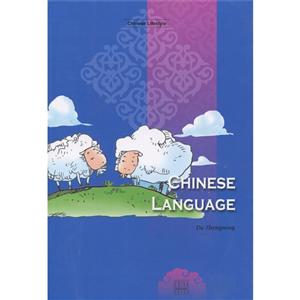-
>
(精)方力钧作品图录
-
>
《藏书报》2021合订本
-
>
中外性文物大观
-
>
马克思主义经典著作解读丛书·探索人类解放的新路径《1844年经济学哲学手稿》解读
-
>
襄阳府志(九品)
-
>
奇思妙想创意玩具书(精装4册)
-
>
大慈恩寺
中国的语言 版权信息
- ISBN:9787508520186
- 条形码:9787508520186 ; 978-7-5085-2018-6
- 装帧:暂无
- 册数:暂无
- 重量:暂无
- 所属分类:
中国的语言 本书特色
Chinese Rites and Rituals Chinese Food Life Care Chinese Physical Exercises and Health Care Chinese Folk Customs
中国的语言 内容简介
汉语有其独特的规则和独特的美。本书直接用英文写成,首先概括介绍 “中国的语言”,之后以六个章节阐述普通话的特点,分别介绍其音韵、音调、词法和语法等方面。书中有许多典型而有趣的例子,帮助读者轻松学习汉语。 This book begins by a general introduction of various "Chinese languages." After the introduction are six chapters elaborating on the distinctive features of Mandarin Chinese, respectively in terms of its phonology, tones, morphology and syntax. In each chapter, typical and practically usable examples are provided along with annotation of the tones and translations, so as to help readers learn with ease.
中国的语言 目录
Preface
Annotating Abbreviations
Chapter One: An Overview of the Chinese Language
Languages of the Han Chinese and Chinese Ethnic Groups
Mandarin, Putonghua and Chinese Dialects
Classic Chinese and Modern Chinese
The Speech and Writing of Modern Chinese
Chinese Characters and Their Changes
Pinyin and the Computer Input of Chinese Characters
Chapter Two: The Phonology of Mandarin Chinese
Classification and Representation of Pinyin Sounds
Simple Initials
Compound Initials
Simple Finals
Compound Finals
Summary: All Pinyin Sounds
Special Cases: Sound Change (Sandhi)
Chapter Three: Tones of Mandarin Chinese
The Tone and Meaning in Mandarin Chinese
Change of Tones in Context
The Light Tone Suffix in Orientation Words
Summary
Chapter Four: Chinese Words and Phrases
Chinese Word Structures
Content Words and Function Words
Substantive Words
Predicate Words
Function Words
Word Groups
Chapter Five: The Basic Structures of Chinese Sentences
Sentence Components and Word Order
The Sentence Subject
The Sentence Predicate
Chapter Six: Complex Sentences and Compact Sentences
The Complex Sentence and Simple Sentence
Complex Relations and Connectives
Compact Sentences
Compact Sentence Connectives
Omission of Connectives in Compact Sentences
Chapter Seven: Summary: Features of Chinese Mandarin
中国的语言 节选
1. Single-Morpheme Words of One Character Compared with disyllabic(or two-Character) words, single-morpheme words of one character have only a small number in Modern Chinese. However, some of these words play an essential role in the structure of the language and should be learned at the very outset of the course. The following is a list of such examples. 是shi4 an affirmative function word used between the subject and its complement of a sentence. The basic meaning is "yes","right". It's related with the English copula BE but different in that it is not indispensable as the English link verb unless when making an assertion, carring a strong affirmative meaning or making and emphasis. 是我。shi4 wo3. It IS me. 我是老师。wo3 shi4 lao3 shi1. I'm a teacher. 我是在这儿。wo3 shi4 zai4 zher4. I AM here. Compare: 我在这儿。I'm here. ...... Languages of the han chinese and Chinese Ethnic Groups Hanyu, or the language of the Han nationality, commonly known as theMandarin Chinese, is certainly the language generally used by the Chinesepeople. Its standard form is also called Putonghua, Guoyu, or Huayu, respec-tively in Mainland China, Taiwan, Malaysia and Singapore. But it is not theonly language used by all Chinese. This is because China is a big country with55 ethnic minorities in addition to the Han people, and most of them have theirown languages. Chinese linguists generally agree that the total number of lan-guages used by China's ethnic groups is over 80, with some ethnic groups us-ing more than one languages. Among these different languages, 30 have writ-ten forms. In terms of language genealogy, they are categorized into 5 differentfamilies: the Sino-Tibetan, Altai, Austro-Asiatic, Austronesian and Indo-European. Therefore, the phrase "Chinese Language" should in fact have its plural forms.When used in the singular form, it only means the language originally belong-ing to the Han people (hence called Hanyu), which has been adopted as thecommon language used across ethnic boundaries. Among all ethnic groups ofChina, some have adopted the Han people's language, with their own languageshaving gone into extinction, such as the Hui and Manchurian people(respectively counting for 9.8 million and 10.6 million in population). Othersuse both Hanyu and their own languages. The Chinese central government's language policy is to promote the use ofStandard Chinese (or Standard Mandarin) as the national language. In the meantime, however, the policy also encourages protection of the ethnic languages.According to Article 8 of the Law of the Peoples Republic of China on the StandardSpoken and Written Chinese Language, "all the nationalities shall have the free-dom to use and develop their own spoken and written languages". As a result,most preliminary and secondary schools in China's ethnic minority areas prac-tice bilingual education in both Mandarin Chinese and their own languages.
- >
月亮与六便士
月亮与六便士
¥15.1¥42.0 - >
烟与镜
烟与镜
¥24.0¥48.0 - >
新文学天穹两巨星--鲁迅与胡适/红烛学术丛书(红烛学术丛书)
新文学天穹两巨星--鲁迅与胡适/红烛学术丛书(红烛学术丛书)
¥9.9¥23.0 - >
山海经
山海经
¥19.7¥68.0 - >
经典常谈
经典常谈
¥12.7¥39.8 - >
企鹅口袋书系列·伟大的思想20:论自然选择(英汉双语)
企鹅口袋书系列·伟大的思想20:论自然选择(英汉双语)
¥6.3¥14.0 - >
自卑与超越
自卑与超越
¥12.7¥39.8 - >
史学评论
史学评论
¥22.7¥42.0
-
4.23文创礼盒A款--“作家言我精神状态”
¥42.3¥206 -
4.23文创礼盒B款--“作家言我精神状态”
¥42.3¥206 -
一句顶一万句 (印签版)
¥40.4¥68 -
百年书评史散论
¥14.9¥38 -
1980年代:小说六记
¥52.8¥69 -
中图网经典初版本封面-“老人与海”冰箱贴
¥20¥40





















